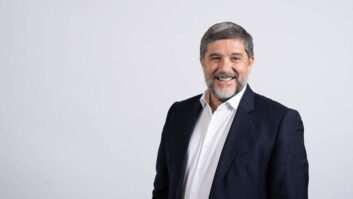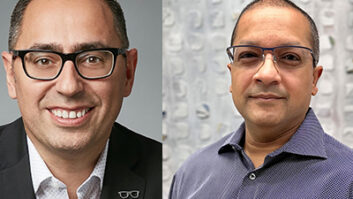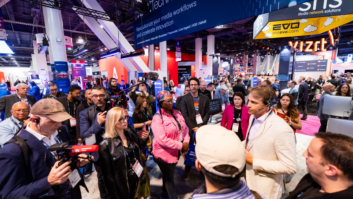 How did you get started in the media tech industry?
How did you get started in the media tech industry?
I spent about ten years working in telecommunications on VoIP at start-ups and Fortune 100 companies. Then, one of my close colleagues joined Comcast, and he made a few introductions on both the voice and video side of their business. The next thing I knew, I was on a flight to Philadelphia and interviewing for roles within both of those teams.
I will never forget my final interview for the video team. It was with a very well-known senior engineer who authored many cable and MPEG specifications. I remember sitting in his office sweating as he flipped through my resume for what seemed like ten minutes. Although it was printed in black and white, my interviewer’s red pen notes ensured more red ink on the pages than black. Finally, he looked across the desk and said: “Well, the way I see it is we could hire someone with video experience, or we could hire you. Tell me why we should hire you.” I had created this story around the similarities of VoIP and Video over IP, and how they were very similar, only voice was more challenging because of the latency issues with crosstalk in a conversation. Boy, was I wrong. Video turned out to be a lot harder!
I received offers from both teams and decided to take the IP video role as it was something brand new, both for Comcast and for me. From there, I built a lab and a team that ran some of the first IP linear testing over DOCSIS.
How has it changed since you started your career?
VoD was still a recent product launch at the beginning of my career, and IP video was in its infancy. There was no such thing as ‘direct-to-consumer’ (D2C) as all video was delivered through an aggregator. And Netflix was still shipping DVDs! The cloud has since taken a much more prominent role in the media and entertainment space in terms of operation, processing and media commercial and deployment. Streaming is growing exponentially in terms of how viewers and subscribers want to consume their media. It is almost unrecognisable as an industry since I took my first tentative steps into it and continues to evolve at pace. This is one of the most enjoyable parts about being part of it!
What makes you passionate about working in the industry?
There isn’t one single element. I have been fortunate to meet so many great people over the years who have not only been fantastic colleagues but have also become wonderful lifelong friends. Another key point is that you must be driven to tackle and solve new challenges. Video is hard. It presents some of the most difficult scaling problems in technology, whether it’s Super Bowl-type live events, addressable advertising with millions of viewers hitting an SCTE-35 trigger at the same time or ultra-low latency synchronised streaming for sports betting. However, the world’s leading media brands rely on innovation to respond to the demands of their viewers. It’s this responsibility and trust that is hugely motivating.
If you could change one thing about the media tech industry, what would it be?
On International Women’s Day in March, I saw a powerful advert campaign on LinkedIn from a company in the UK. One of the ads asked the reader to imagine a CEO and another to imagine someone crying in the office. The first ad then asked, “Is it a man?” and the second “Is it a woman?” If you polled a hundred people, I doubt the response would be even close to 50/50. To make our industry more inclusive, we must first address and shatter stereotypes and unconscious gender biases that are inherently at play.
How inclusive do you think the industry is, and how can we make it more inclusive?
Not nearly enough. There have been big efforts and notable improvements over the years, but meaningful change takes time, and we have a long way to go. It all starts with awareness and education. People must understand what it means and understand the value of diversity and inclusion.
I am a huge fan of the OODA (observe, orient, decide, act) loop for problem-solving. The way diversity really clicked for me was when I understood the orient phase. This is where you take all the information you have gathered about a problem, and you start applying mental models to that data to understand it, matching patterns based on previous experiences. One of the key things you must do is to try and remove your own bias from these mental models or how you interpret the data, and having as much diversity as possible in this phase creates the most accurate orientation of the problem. I know there are many benefits, but I believe this is one of the fundamental ones that helps everyone learn and become better every day. Wider diversity ensures that we all have a broader perception of the world and environment around us.
How do we encourage young people that media technology is the career for them?
Like everything else, it’s through awareness. There is such a broad range of careers in the media space. From cameras, video editing and production, marketing, legal, finance, and all the engineering and technical roles, ranging from building better codecs, streaming protocols, and the networks that deliver video down to the devices and applications. If you really think about it and look on YouTube, Instagram, TikTok, etc., more young people are in the media technology space than ever before. Video is truly becoming democratised.
Where do you think the industry will go next?
The very next step will likely be around high-quality, low latency streaming for gaming and sports betting. But before we get there, our industry needs to continue to inspire and push the boundaries of the streaming era. Ultimately, we need to realise a future where live can be delivered without limits, at broadcast quality and scale, to any screen or device. Unless we resolve that challenge, every other innovation will be a very long way off.
What’s the biggest topic of discussion in your area of the industry?
There are many to choose from! One that is close to mind though is the pressure TV operators find themselves under to drive additional capabilities to their media business, particularly in light of growing competition from streaming service providers. At the same time, they also need to reduce ongoing costs for their media services and operations. There is now an increasing need for flexibility in resource and infrastructure usage. Event-based services and DVR platforms are driving short-term use of what would have traditionally been fixed capacity headend services, using platform services based on user demand and the streaming of content scaled based on delivery needs. All these factors are helping to increase the use of cloud-based infrastructure. But our customers and partners are now faced with operating media-specific services in a cloud environment. That requires specialised operational capabilities, and that’s no mean feat.
What should the industry be talking about that it isn’t at the moment?
The industry went from all video being delivered to a customer through an aggregator to shifting more and more towards D2C and applications. We tend to over-rotate in these major shifts and go too far. There needs to be some sort of correction to get back to a balanced place, as I believe we have over-rotated on too many options, too many apps and too much fragmentation. It’s hard to find content. Even global searches on Apple TV, Android TV, Amazon Fire TV Stick, and Xfinity boxes fail to find what we want, and the consumer is often left performing a search within multiple levels of the platform. It’s frustrating, and the whole point of entertainment is that it’s supposed to be easy and quick to consume.







